Narratives of Danger: The Sun of Knowledge in Arabic Occulture
Liana Saif guides us through the history of what is considered a “most dangerous grimoire” and traces the development of its dark reputation.
On the Arabic internet and in various printed magazines, there is one word prominently associated with Shams al-maʿārif al-kubrā (The Sun of Knowledge, Larger Version): khaṭar or danger. The work is attributed to Aḥmad al-Būnī (d. ca. 622/1225). Not much is known about his life. Evidence suggests he was North African and flourished in Cairo. As a Sufi, he was known as a worker of miracles whose prayers were always answered. Nowadays, he is known as an infamous arch-sorcerer. In the West, his book is gaining increasing attention from academics, enthusiasts, and practitioners.
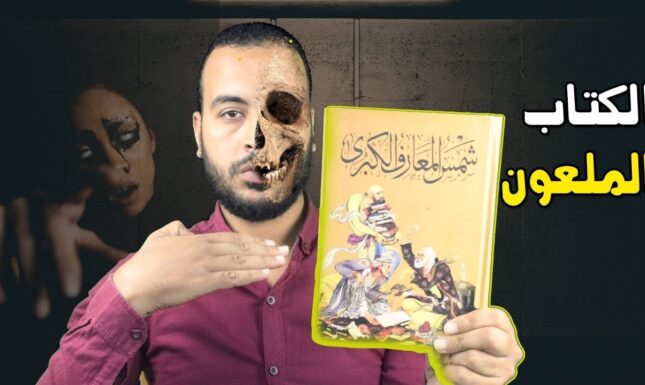
Attribution to al-Būnī
Al-Būnī indeed wrote several treatises on the occult science of letters and divine names (ʿilm al-ḥurūf wa al-asmāʾ), which correlates the letters of the Arabic alphabet with the hierarchical and emanative structure of the universe as decreed by God. Consummate knowledge of letters and divine names imparts the ability to mobilise their correspondences in the celestial and terrestrial realms and achieve magical and miraculous effects. This science was not marginal in medieval and early modern Islamicate societies, nor is there any evidence of formal censorship of it. Rather, it was perceived as esoteric knowledge received by God’s favour through revelations to those who achieve a heightened spiritual state.
Arabic occulture gives an apocryphal history of Shams al-maʿārif: 600 years ago, in the fifteenth century, according to this history, a single manuscript, written in deer blood on hide, became publicly accessible and is now in the British Library. People say that the earliest printed – now lost – edition was published by the University of al-Azhar in 1900. Another edition was published in 1985 by al-Maktaba al-Shaʿbiyya in Lebanon.
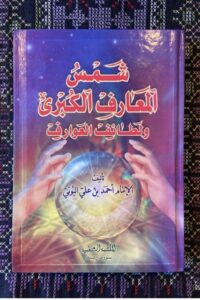
Circulation and Reception of al-Būnī’s Work
Recent research has shown that the circulation and influence of al-Būnī’s original works were first restricted to closed Sufi communities. By the fourteenth century, his works had become better known outside these circles and from there grew in popularity. However, today’s fame of al-Būnī rests on the popular printed editions of Shams al-maʿārif al-kubrā, which are in fact a compilation of al-Būnian-type occult practices produced in the seventeenth century possibly by a later generation of disciples.
Throughout history, a number of authors have expressed circumspection regarding the legitimacy of al-Būnī’s practices and the attribution of Shams al-maʿārif to him. Early on, Shams al-maʿārif was known to be hard to obtain. In the Nafḥ al-Ṭīb (The Scent of Perfume) by the biographer al-Maqarrī (d. 1632), we find a poem by the Andalusian ʿUmar al-Zajjāl addressing his shaykh, asking to be given the ijāza (formal permission to transmit a text) for several works including Shams al-maʿārif “about whose authorship I asked every man”. The theologian Ibn Taymiyya (d. 1328) saw al-Būnī as a deluded devil worshipper, and the historian Ibn Khaldūn (d. 1406) considered his lettrist magic to be forbidden sorcery.
De-esotericisation
Of huge consequence to the formation of al-Būnī’s reputation is the fact that outsider perspectives on the science of letters and al-Būnī himself strip his thought of its Sufi cosmological frameworks. The science of letters was often reduced to techniques and lists of powerful correspondences between elementary qualities, days, hours, planets, stones, angels, jinn, letters, and divine names. This de-esotericisation of al-Būnī is encapsulated best in the popular, controversial, and equally hazardous grimoires penned by the enigmatic 20th-century al-Sayyid al-Ḥusaynī al-Falakī and ʿAbd al-Fattāḥ al-Ṭūkhī—both of whom clearly influenced by al-Būnian magic, reproducing and simplifying a lot of the material found in Shams al-maʿārif.
Al-Ḥusaynī al-Falakī was known as astrologer and magician to celebrities. Legend goes that the Egyptian director Yasīn Ismāʿīl Yāsīn asked al-Ḥusaynī to play the role of a spiritual healer in the 1988 film, “He Returns for Revenge”. He invoked a jinn, resulting in weird happenings on the set and to the actors.

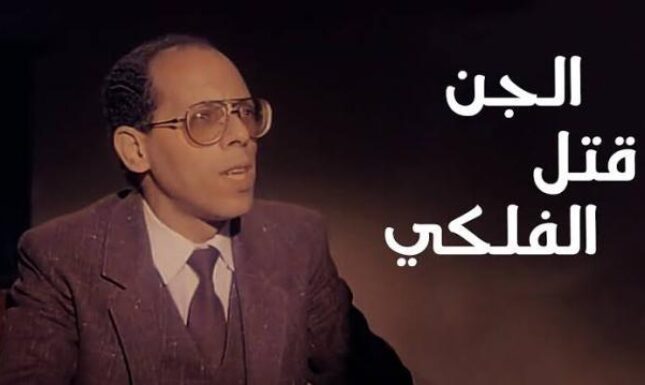
Al-Falakī al-Ḥusaynī is believed to have been killed in 2003 at the age of 58 by a jinn in his home in Faysal, one of the neighbourhoods of Giza in Cairo. His face is said to have been found horrifically contorted. Apparently, Bulaq’s head of investigations stated that the cause of death was unclear. It is rumoured that the police found an inordinate amount of milk and pieces of fabric soaked in all kinds of human fluids.
The booklets of al-Ḥusaynī and al-Ṭūkhī tackle all occult subjects imaginable: jinn and angel invocations, magical squares, lettrist magic, astrology, talismans, physiognomy, geomancy, magical scripts, numerology, and prestidigitation. More impressive is the way they condense complex divinatory and magical traditions into clear and simple instructions, rendering their magic more solitary and the grimoires more user-friendly: no longer do you have to observe obstruse astrological conditions, no soul-refinement is required, and no need of legitimisation from a spiritual hierarchy.
Danger
These texts were printed and distributed from the 1950s onwards by various local publishing houses such as al-Maktaba al-Shaʿbiyya and al-Maktaba al-Thaqāfiyya in Beirut. They are mostly flimsy and printed on subpar-quality paper, now yellowed with age. The illustrations and diagrams are very rudimentary, but their residence in the dark recesses of the overpacked legendary bookstalls and stores lent them value and gravity. This is reflected in the narratives about the places whence unscrupulous people usually retrieve their copies of the Shams: the “deep-web”, the desert, or confiscation rooms: terrains of khaṭar.
The price for these popular grimoires nowadays is steep. In Jordan, they sell for 50 to 100 dinars (€65 to 130; in Jordan, a kilo of bread costs 0.55 dinars). When I asked book vendors about such books in a recent visit, each of them asked me, “But do you know al-Būnī’s Shams al-maʿārif al-kubrā?”, because he’s “their chief who taught them sorcery”, a reference from Quran 26 (al-Shu‘ara’): 49 to the Pharaoh’s incensed response to his magicians after submitting to Moses. Shams al-maʿārif is reputed to be “banned” due its destructive power. I havedn’t been able to ascertain whether specific laws exist targeting Shams al-maʿārif. However, under Jordanian law, charlatanry and the practice of sorcery for financial gain are crimes, though the criterion of “practice” is ambiguous enough to implicate booksellers.
Today, people say that just owning a copy endangers one’s life; even downloading a PDF is an invitation to both viruses and demons. Vice Arabia even featured a piece dedicated to Shams al-maʿārif under the title, "Defying Prohibition and Revealing the Hidden". The author included a case of female students who were possessed by jinn following reckless experimentation, reminiscent of the plot of the 1996 film “The Craft”, whose outcast teenage protagonists fell victim to their magical ambitions.
The al-Būnī Bug
In the contemporary Western context, practitioners and enthusiasts have caught the al-Būnī bug. This resulted in a rise of interest in Islamic magical traditions in the last decade that is concomitant to the growth of academic research on Islamic esotericism and occult sciences. Nevertheless, in the absence of a translation, Shams al-maʿārif
was frustratingly inaccessible to non-Arabic speakers. Not surprising, then, the eagerness with which the 2021 English translation of selections of Shams al-maʿārif was received (translated. by Amina Inloes, illustrated by J. M. Hamade, Revelore Press).
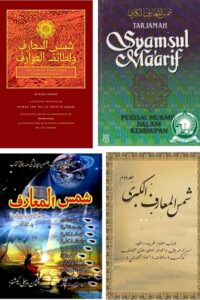

Shams al-maʿārif is a global phenomenon, inspiring many lines of inquiry about the myths and hazards surrounding it in Islamic communities in Asia and Africa.
It remains fascinating how Shams al-maʿārif was transformed into a pillar of the blackest of magic in the public imagination. The content of Shams al-maʿārif is unstable, and variations are easily detectable across the printed editions. Sensationalisation and religious condemnation fed the scare by tweaking the content to fulfil the expectations of consumers, becoming more sinister and jinn-focused. By insisting on my research purposes, I gained the trust of many booksellers in downtown Amman who were very accommodating. I asked who the clients seeking these books were and the answer was mostly “fake shaykhs” and, heartbreakingly, bullied kids who want to protect themselves or take revenge on their tormentors, even if it puts them in danger of the unseen.


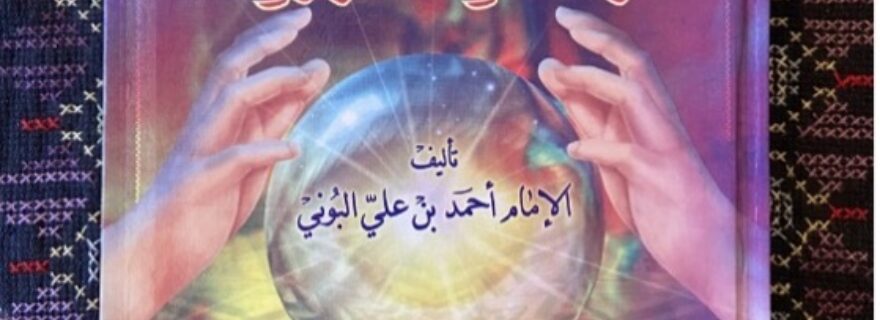
0 Comments